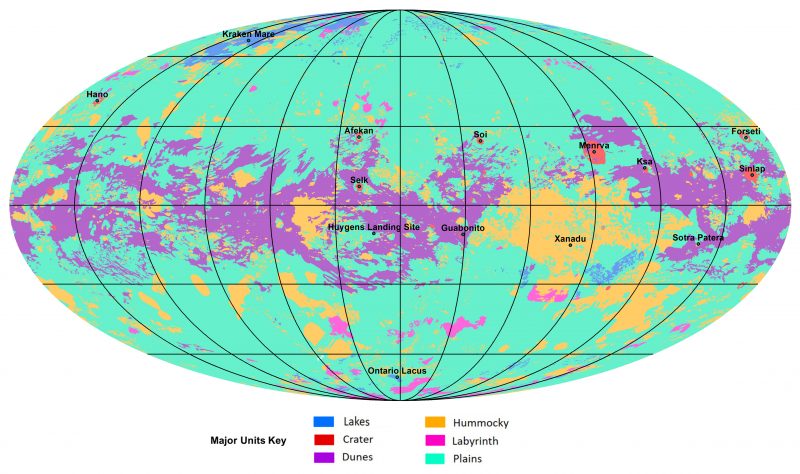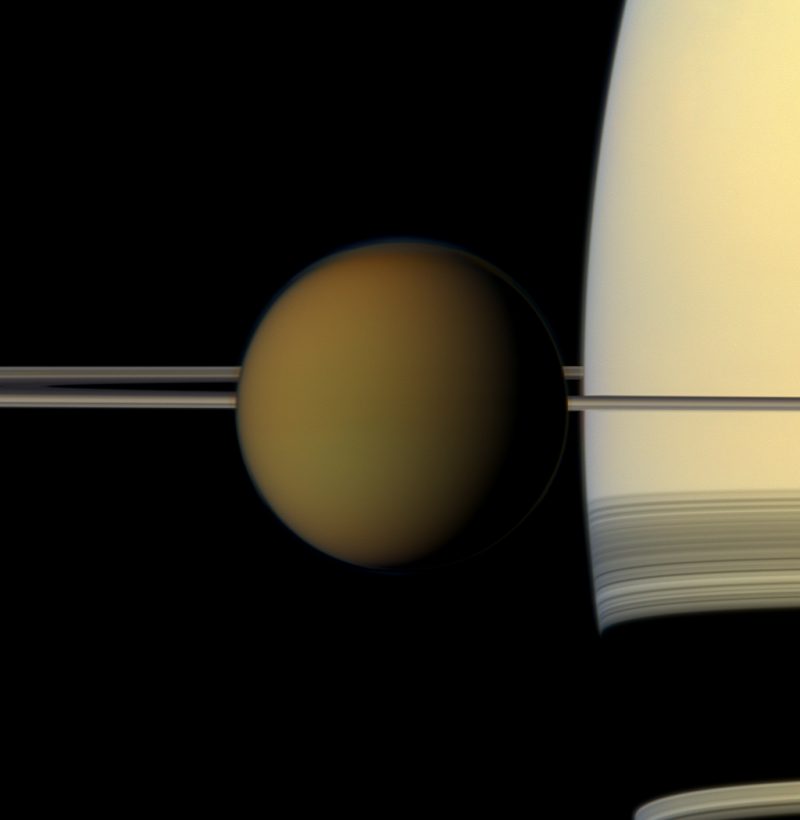
Scientists have completed the first map showing the global geology of Saturn’s largest moon, Titan. The new map reveals a dynamic world of dunes, lakes, plains, craters and other terrains.
The map is based on radar and visible-light images from NASA’s Cassini mission, which orbited Saturn from 2004 to 2017.
Titan is the largest of planet Saturn’s 82 moons. Titan is the only planetary body in our solar system – other than Earth – known to have stable liquid on its surface. But on Titan the liquid that rains down from the clouds and fills lakes and seas isn’t water. It’s methane and ethane – hydrocarbons that we think of as gases but that behave as liquids on the frigid world of Titan.
NASA planetary geologist Rosaly Lopes is lead author of new research used to develop the map, published Monday (November 18, 2019) in the journal Nature Astronomy. Lopes said in a statement:
Titan has an active methane-based hydrologic cycle that has shaped a complex geologic landscape, making its surface one of most geologically diverse in the solar system.
Despite the different materials, temperatures and gravity fields between Earth and Titan, many surface features are similar between the two worlds and can be interpreted as being products of the same geologic processes. The map shows that the different geologic terrains have a clear distribution with latitude, globally, and that some terrains cover far more area than others.

The researchers used data from the radar imager on the Cassini spacecraft, which did more than 120 flybys of Titan between 2004 and 2017. Lopes said:
This study is an example of using combined datasets and instruments. Although we did not have global coverage with synthetic aperture radar [SAR], we used data from other instruments and other modes from radar to correlate characteristics of the different terrain units so we could infer what the terrains are even in areas where we don’t have SAR coverage.
Planetary geologist David Williams of Arizona State University is a study co-author. He said:
The Cassini mission revealed that Titan is a geologically active world, where hydrocarbons like methane and ethane take the role that water has on Earth. These hydrocarbons rain down on the surface, flow in streams and rivers, accumulate in lakes and seas, and evaporate into the atmosphere. It’s quite an astounding world!
Bottom line: Map showing the global geology of Saturn’s largest moon Titan.











